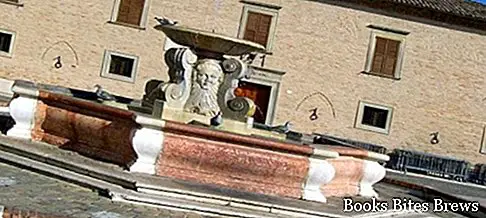What to see in Senigallia, itinerary including the main monuments and places of interest, including Rocca Roveresca, Palazzo del Duca, Foro annonario and Portici Ercolani.
Tourist information
Famous seaside resort on the Adriatic coast, Senigallia is located in the Marche in the province of Ancona, from which it is 26 km away.
It was the ancient Sena Gallica, Roman city razed to the ground by Alaric in 400.
Devastated several times, it was conquered by the Church in the fourteenth century, later it was the lordship of the Malatesta and the Della Rovere in the fifteenth century, while in the sixteenth century it became the main merchant node of the Duchy of Urbino.
The Rocca Roveresca of 1480, which constitutes a valid example of a Renaissance fortress, has a square plan with four cylindrical corner towers connected by a wall with a tower.
The sixteenth-century Palazzo del Duca had the role of official residence of the Dukes of Urbino.
In the square there is the Fountain of the Lions, also called Fontana del Duca, an interesting work of the sixteenth century.
Palazzetto Baviera, which is a fifteenth-century reconstruction of a building from the previous century.
What see
The Foro Annonario, built by Pietro Chinelli in 1800, includes a portico with thirty Doric columns, the square in front is embellished with the seahorses fountain.
The Portici Ercolani, developed hundreds of meters along the river, date back to the eighteenth century.
The Church of the Cross, built between the sixteenth and seventeenth centuries, has an interior with a single nave characterized by remarkable Baroque decorations.
Recommended readings- Fossombrone (Marche): what to see
- Marche: Sunday day trips
- Fermo (Marche): what to see
- Marche: what to see among valleys, hills and ancient villages
- Osimo (Marche): what to see
In Palazzo Mastai, a building built in the early 1600s, there is the Pius IX Museum, where memorabilia and memoirs relating to the Pope are exhibited, and the Pinacoteca of sacred art, including various works, including Lot and his daughters, a remarkable painting by Palma il Giovane, and other canvases made by the school of Guido Reni and Parmigianino.
Nearby is the Municipal Palace, built in the early 1600s together with the Clock Tower, with the fountain of Neptune on the right.
The eighteenth-century Church of San Martino, characterized by a Baroque façade, preserves inside a Madonna and Child with Saint Anna, by Guercino, and a Madonna and Child with Saints by Palma il Giovane.
The Church of Santa Maria Assunta, dating back to the nineteenth century and with a neoclassical facade, contains an Annunciation, probably built by Ramazzani.
The Duomo, completed in 1800, has a Latin cross interior.




